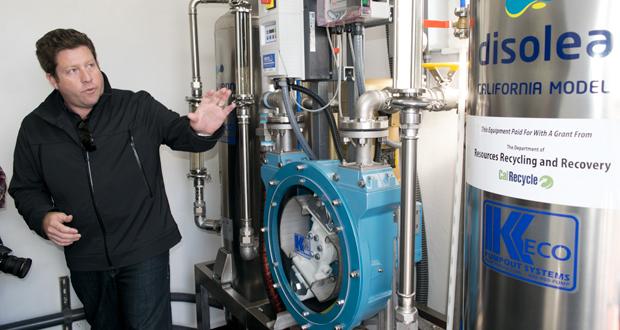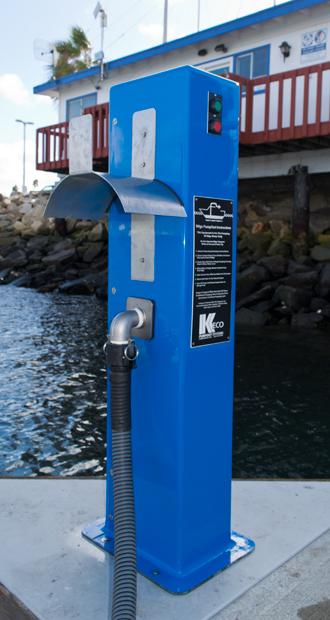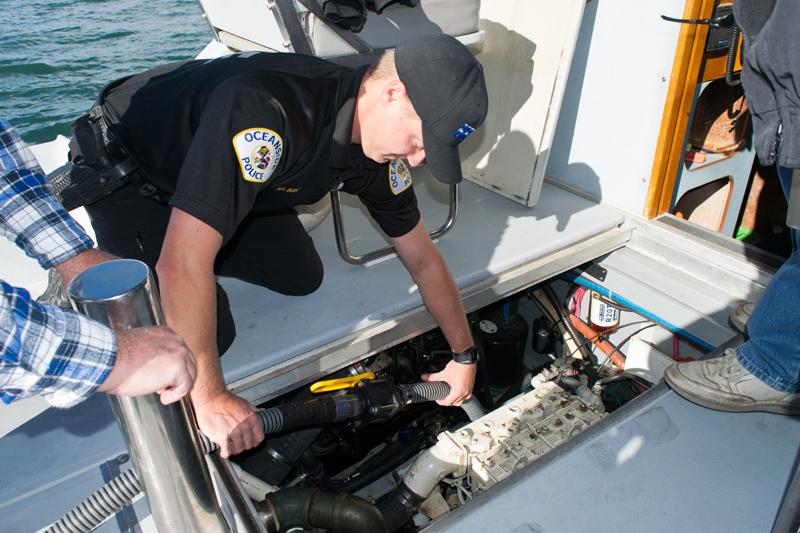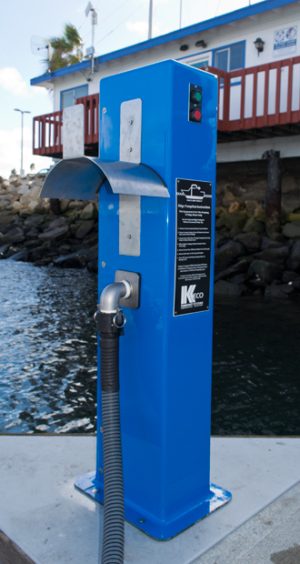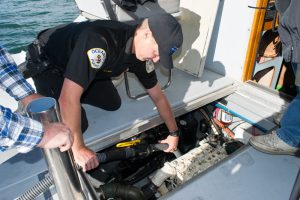
Oceanside CA— A new tool for boaters was unveiled last week at the Oceanside Harbor which will help improve water quality for boaters, swimmers and wildlife.
The project, conceived and led by The Bay Foundation brings a state-of-the-art bilge pump-out and oil-water separator facility, that is free to use and makes it easy for boaters to properly dispose of oily bilge water.
Victoria Gambale, The Bay Foundation Water Quality Programs Manager said the installation of the pump was made possible by ” a true collaboration between State, not-for-profit, commercial businesses and city government.” Gambale added that without funding from CalRecyle, the project would not have been possible.
The pump system is unique, using Italian technology, it doesn’t use any filters, heating elements or chemical process to separate the contaminants and water. “The system reduces the environmental impact which is what we are always looking for.” said Victoria Gambale.
The system is one of only three in California, one in Santa Barbara and the other in the Channel Islands Harbor but the Oceanside system is unique, in design, in the US.
Paul Lawrence, Oceanside Harbor Manger said “We are witnessing a new way boaters can deal with an old problem. It’s a solution that’s free to the public and accessible 24 hours a day.”
The bilge is the lowest compartment on a vessel. Rain and wash water can collect in a bilge as well as oil, fuel, antifreeze, and other hazardous materials from the engine. This mix of water and hazardous materials can be difficult, costly, and inconvenient to properly and ethically dispose.

The danger is that one pint of oil can produce a slick of approximately one acre (about 209 feet square) on the surface of water, which is harmful to marine life and can stick to everything it comes in contact with from beaches and bird feathers to boat hulls and docks.
“The system is really simple to use.” explained Andrew Bleier with Keco Pump and Equipment, “There is a pedestal and push button on the dock. You simply start the system up, throw a hose in the bilge of the boat. The water is drawn up to the processing station, which is up on land, away from the public in a protected space. The system is able to achieve greater than 99% separation of oil and water.” Bleier added “The system is extremely low maintenance. Our goal here is to be able to off load pure oil for recycling.”
The oil collected is stored on site, in 50 gallon drums, until it’s shipped off for recycling.
“I work closely with the Harbor Manager because I am responsible, city wide, to make sure we stay in regulatory compliance” explained Mo Lahsaie, PH.D., REHS, the Environmental Officer with the City of Oceanside, “We have a permit called Municipal Storm Water permit from the State of California. That permit is all about runoff, pollutants that are carried by runoff to receiving waters like the harbor.” continued Dr. Lahsaie “If the permit says the water is swimable, it has to remain swimable. If it says it is fishable, the fish have to be safe to be eaten by humans. We can’t downgrade or we face huge fines not to mention the bad publicity for falling out of compliance. When we have projects like this, we can show the state that not only do we meet our obligation but we go above and beyond.”
New Pump to Help Water Quality at Harbor
December 15, 2015




